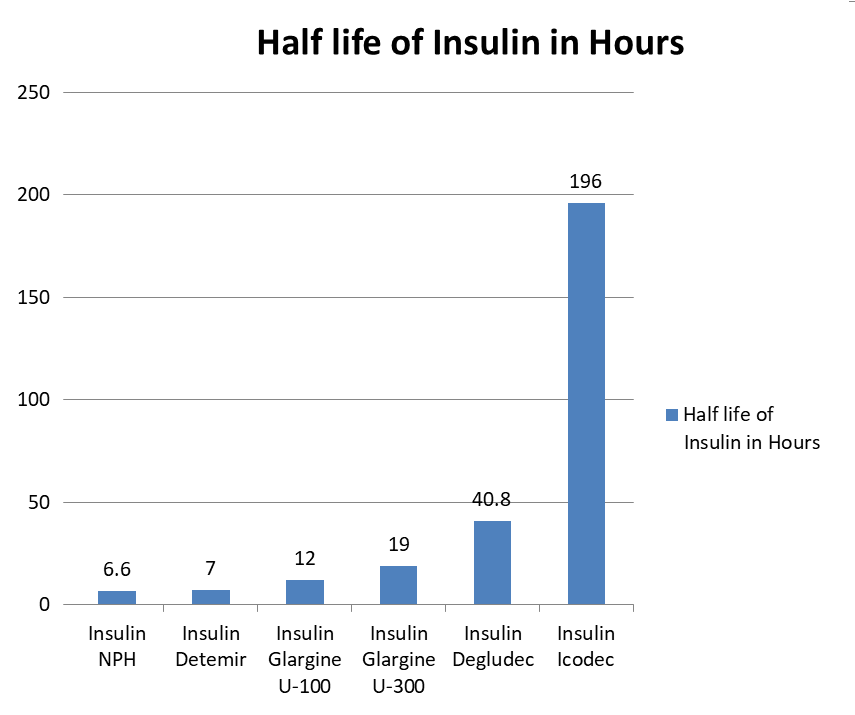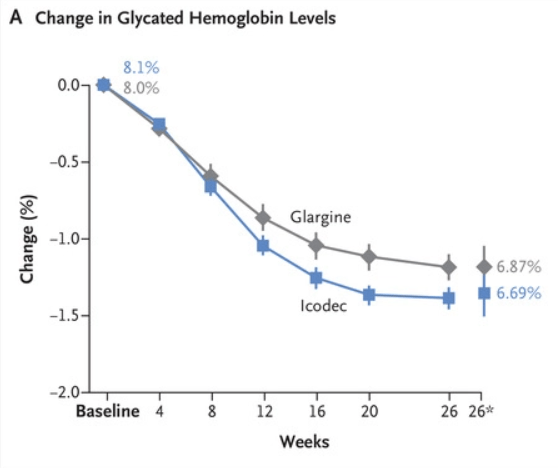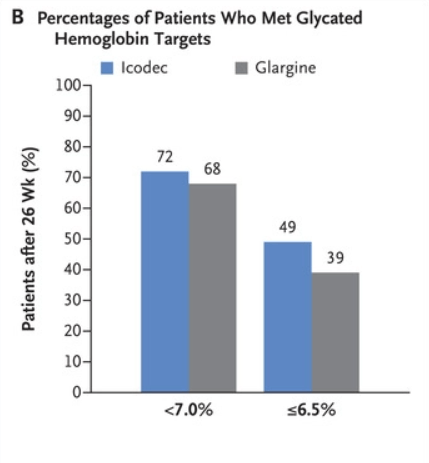Icodec Insulin is once-weekly basal insulin. Unlike all the other basal insulins available until now that are administered once daily, it is administered once a week.
It is an insulin analog that has a half-life of about one week and the time to reach the maximum concentration after it is administered is about 16 hours.
Go Organic! Try Our Premium Organic Brands
See half-lives of various insulin analogs that are used to provide basal insulin cover throughout the day:
Basal Insulin | Half-life (hours) |
| NPH Insulin | 6.6 |
| Detemir | 7 |
| Glargine U-100 | 12 |
| Glargine U-300 | 19 |
| Degludec Insulin | 40.8 |
| Icodec Insulin | 196 |

Icodec Insulin is currently in clinical trials and is not yet FDA-approved. It is being manufactured by Novo Nordisk Pharmaceuticals and is undergoing clinical trials in both type 1 and type 2 Diabetes patients.
Once weekly insulin in combination with once weekly Semaglutide (Ozempic) or Tirzepatide (Mounjaro) may provide stable glucose control in individuals who are non-compliant with daily medications.
In addition, it can be combined with SGLT-2 Inhibitors, Metformin, Sulfonylureas, or short-acting/ long-acting insulins to provide a basal insulin cover.
Importantly, children with type 1 diabetes who frequently miss their doses can benefit from this once-weekly insulin. Providing a basal cover of insulin may reduce the chances of frequent episodes of ketoacidosis.
Furthermore, it may be a suitable option for patients who have a needle phobia. Once-weekly insulin can minimize the number of injections by 7 times compared to other basal once-daily insulins.
Icodec Insulin Vs Insulin Glargine:
In a recently published article in NEJM titled ” Once-weekly Insulin for Type 2 Diabetes without previous treatment”, the authors have compared Insulin Icodec with Insulin Glargine U-100.
The study proved the efficacy and safety of insulin Icodec. It had a comparable efficacy as Insulin Glargine. Greater than two-thirds of the patients achieved the target glycated hemoglobin in the trial. Likewise, the fasting plasma glucose control was similar in both groups.
It had superior postmeal blood glucose control compared to Insulin Glargine. There was a greater improvement in the 9-point patient-monitored plasma blood glucose control compared to insulin glargine.
It was also noted that Icodec had a favorable side effect profile compared to insulin glargine as the number of hypoglycemic episodes was few compared to Insulin Icodec.

The glucose-lowering effects of Icodec after 26 weeks were better than Insulin Glargine. This was with the added benefit of fewer side effects, especially hypoglycemia.
In addition, once-weekly insulin is an easy option for people who travel most of the time, have a busy schedule, hectic routine, and have poor medication compliance.

HbA1C of 7% or less is the target HbA1C for most diabetic patients as per the ADA recommendations.
The Europeans and other Endocrine societies recommend a target HbA1C of 6.5% or less. However, there is a general consensus that older diabetic patients and patients with other comorbid conditions such as IHD, stroke, kidney, or liver disease can have an HbA1C of around 7%.
When compared with Glargine, a similar percentage of patients in the Icodec achieved the target A1C.
Insulin | A1C of < 7% | A1C of < 6.5% |
| Glargine U-100 | 68% | 39% |
| Icodec | 72% | 49% |
The effect of Icodec Insulin and Insulin Glargine on body weight:
All insulins are associated with an increase in body weight. Insulin detemir causes the least weight gain compared to other insulins.
In this study, Insulin glargine caused a mean weight gain of 1.56 kgs compared to Icodec which caused a mean weight gain of 1.49 kgs from the baseline.
In previous studies, Insulin glargine was noted to cause a similar amount of weight gain.
In Summary:
Once-weekly administration could provide stable glycemic control with better treatment adherence and fewer side effects.
Go Organic! Try Our Premium Organic Brands



